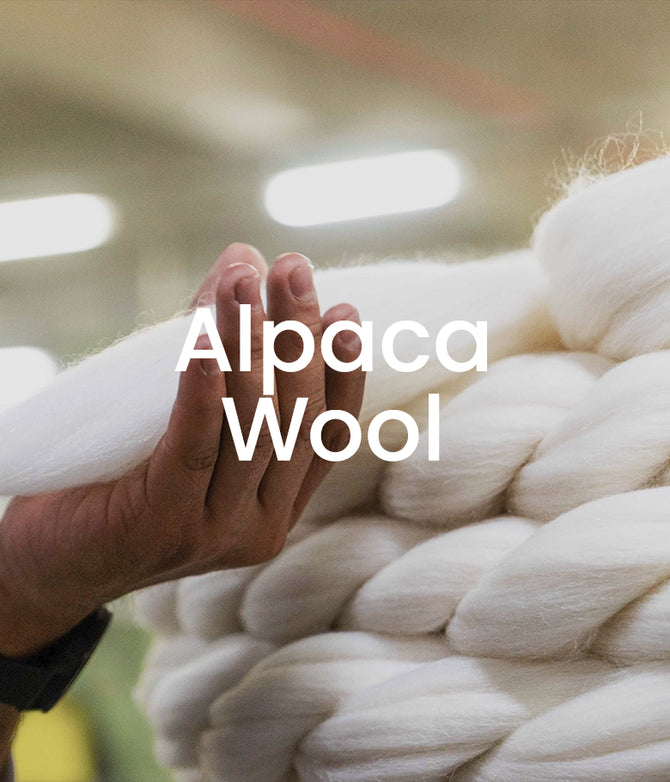Is Alpaca Itchy? Is Alpaca Warm?
Published 08 October, 2019 | Updated 23 September, 2020
Alpaca wool isn’t a new fibre, having been used in the Andes for centuries (or more!) and by the fashion industry for a long time. Alpaca has a reputation as a luxury wool – rivalling cashmere – for high end street wear, but it is new in the outdoor industry. In this article, we answer key questions about the warmth and itchiness of alpaca wool. We also compare alpaca to merino wool, often the fibre of choice for travel, outdoor activies and adventure sports.
Is Alpaca Wool Itchy?
In a nutshell: no, Alpaca wool is not itchy.
There are there factors that determine how itchy a wool fibre will feel against the skin and these are discussed in detail here, but they are summarized below:
- LANOLIN CONTENT
Lanolin is an allergen for some people and is naturally present in large quantities sheep’s wool. - SMOOTHNESS OF THE FIBRE
Wool fibres have microscopic scales which protrude from the surface of the fibre, creating a prickly feeling. The smaller and flatter the scales, the smoother the fibre. - DIAMETER OF THE FIBRE
Coarse wool fibres feel scratchy against the skin, while very fine ones (21 microns or less) feel much softer.
Alpacas produce very tiny amounts of lanolin (sometimes none at all), so many consider alpaca wool hypoallergenic.
The scales on alpaca fibres are smaller and sit quite flat against the surface, meaning alpaca wool doesn't cause a prickly sensation.
Within an alpaca fleece, there are fibres of many different diameters, but baby alpaca wool are the finest categories, with diameters of less than 21 microns (18.5 microns or less). Garments made from baby alpaca wool feel so soft against the skin and are very unlikely to feel itchy.


Is Alpaca Wool Warm?
Bottom line: YES! Alpaca wool is very warm!
Wool fibres work so well as insulators as they are not straight, but instead have slight wave (know technically as the “crimp”), along their length. The waviness of the fibres traps tiny pockets of air between the fibres in a weave; these air pockets are heated by your body and stay warm. Additionally, the internal structure of wool can have an impact on warmth. In most wool fibres, the filaments are packed together, making them appear to have a solid cross-section under the microscope. Fibres that have less dense areas running down the centre, so they can be considered “semi-hollow”, not only trap air in between them, but the “hollow” areas heat up too!
Guess what? Merino wool has solid fibres and alpaca wool has semi-hollow fibres.
Alpaca wool is naturally temperature regulated because of the crimp and semi-hollow core. Alpaca wool clothing traps the heat produced by your body, both inside and in between the fibers. For this reason, if you leave an alpaca base layer hanging outside, at first touch it feels cool, because the air trapped in the fibres is cool. However, once you put your alpaca base layer on, it warms up very quickly to protect you from the cold. But more than that, our thinner layers can prevent you overheating in warm weather!


ALPACA VS MERINO
Is Alpaca Warmer than Sheep's Wool?
YES, alpaca wool is warmer than sheep’s wools, including merino.
We are not trying to say that say merino wool is not warm, because it certainly is! Merino works as a great insulator even when it’s wet. But the difference is in the internal structure of the fibres: Alpaca fibres have those “semi-hollow” cores mentioned above, while merino relies only on the crimp of the fibres to trap warm air. This difference also means merino wool is heavier than alpaca wool.
Is Alpaca Less Itchy Than Sheep's Wool?
Yes, by nature, Alpaca is less itchy than sheep’s wool.
Sheep’s wool has very prominent scales and is coated in lanolin. Further – discounting merino – sheep’s wool fibres tend to be on the coarser end of the spectrum. All this leads to that characteristic wooly jumper itch. However, merino wool used in outdoor clothing tends to be very fine (around 19-20 microns in diameter) and has usually been treated to remove the lanolin and fibre scales, so it feels much softer and less itchy than other types of sheep’s wool. But alpaca wool doesn’t need any special treatment: it’s naturally super soft and even less itchy.
Alpaca wool (particularly the alpaca and baby alpaca fibre grades) is non-itchy, warm, and performs better than merino and other types of sheep's wool. This makes alpaca wool perfect for your outdoor clothing, hiking socks and even underwear.
READ MORE ABOUT ALPACA










